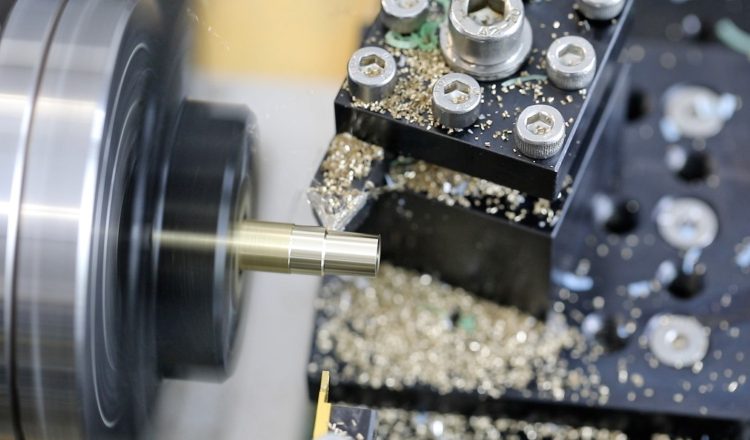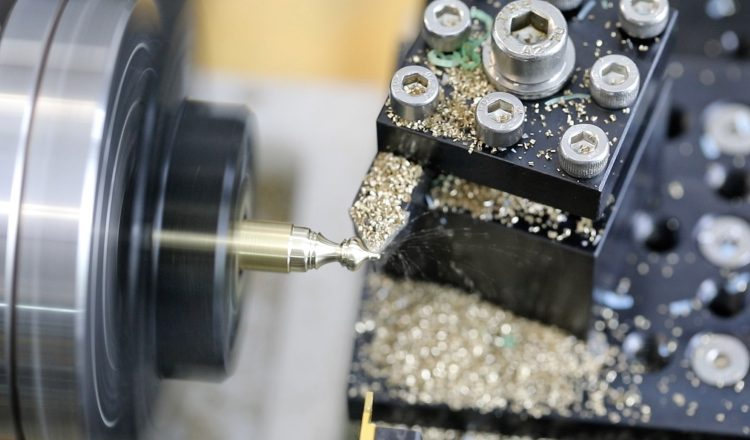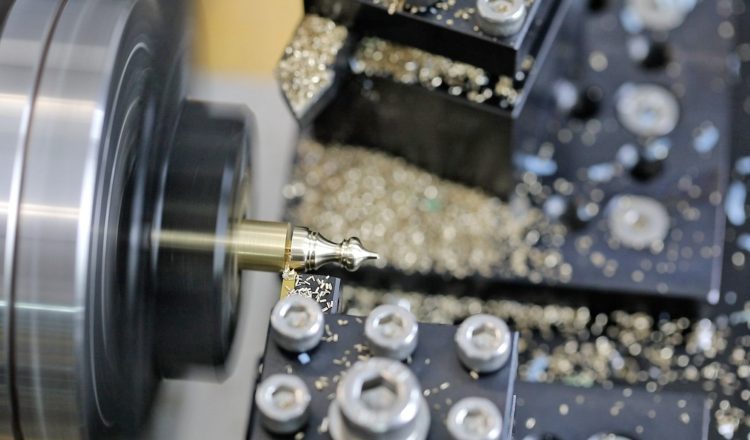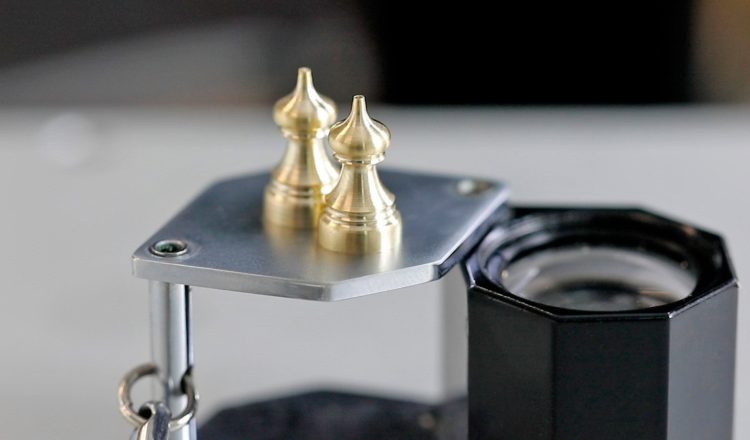
These are third-generation mini lathes manufactured by our company. These machines are essential for precision turning of microscopic parts used in applications such as watches, scientific instruments, jewelry, electronics, and more.
As with all our machines, this model is a compact, fully enclosed tabletop unit. Despite its small size, it delivers powerful performance, capable of handling tasks typically reserved for larger CNC lathes.
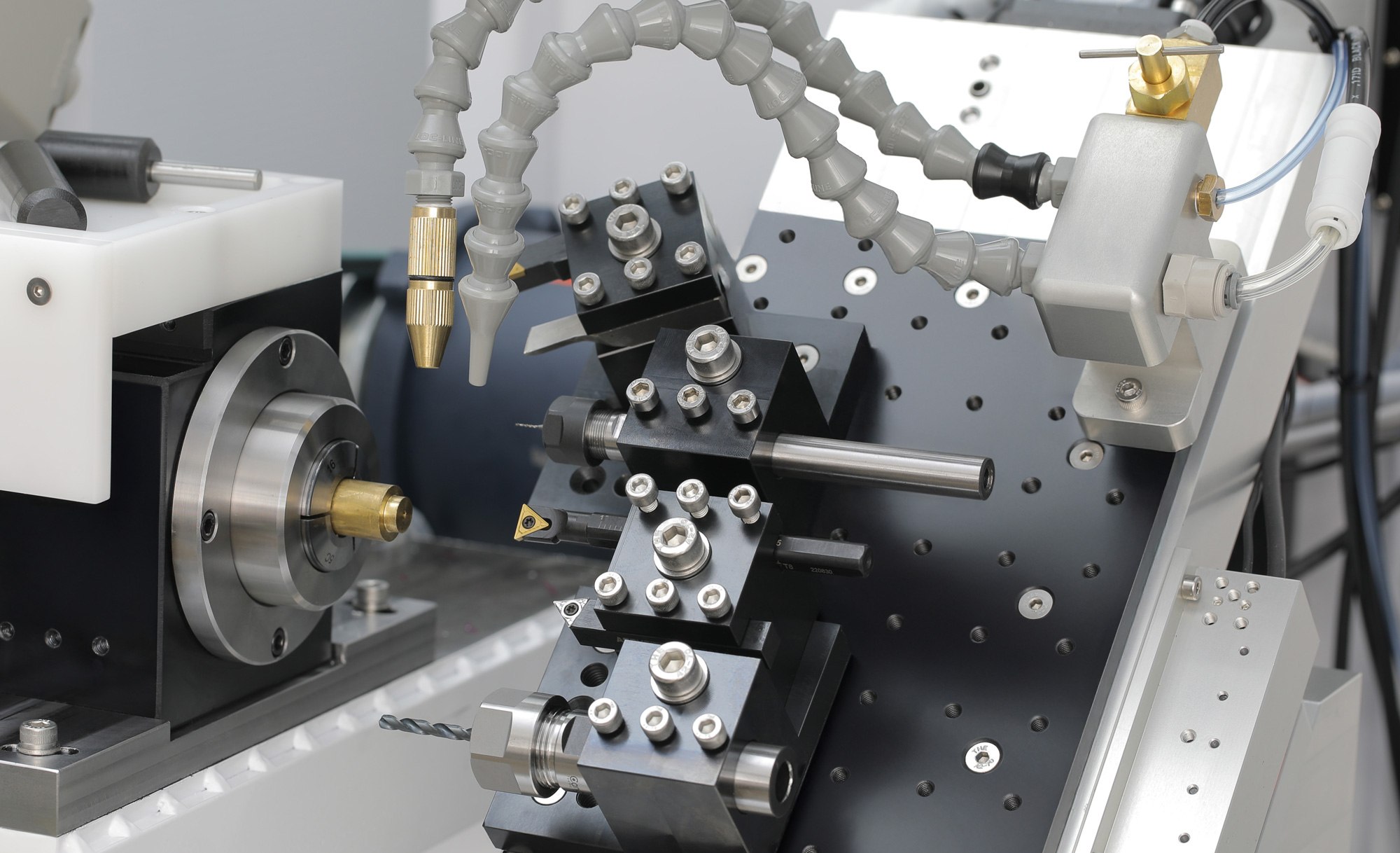
In addition to our standard models, we also offer custom solutions tailored to specific operational needs. If you require a machine designed for specialized tasks, unique tooling, or capabilities beyond the scope of a standard machine, our company is equipped to bring your requirements to life.
The NS CNC Lathe features a 3-axis configuration: X, Y, and Z. While traditional lathes typically operate with two axes (XZ), the inclusion of a third Y-axis expands capabilities. With this setup, you no longer need to manually mount tools at the same height, which can be cumbersome when working with a variety of tools.
The third Y-axis allows for automatic adjustment of each tool’s height during program execution, offering greater flexibility and precision. Additionally, the X-axis is tilted at a 45-degree angle relative to the Y-axis, which provides advantages such as easier tool height adjustments relative to the rotation axis center and improved operator accessibility during machine setup.
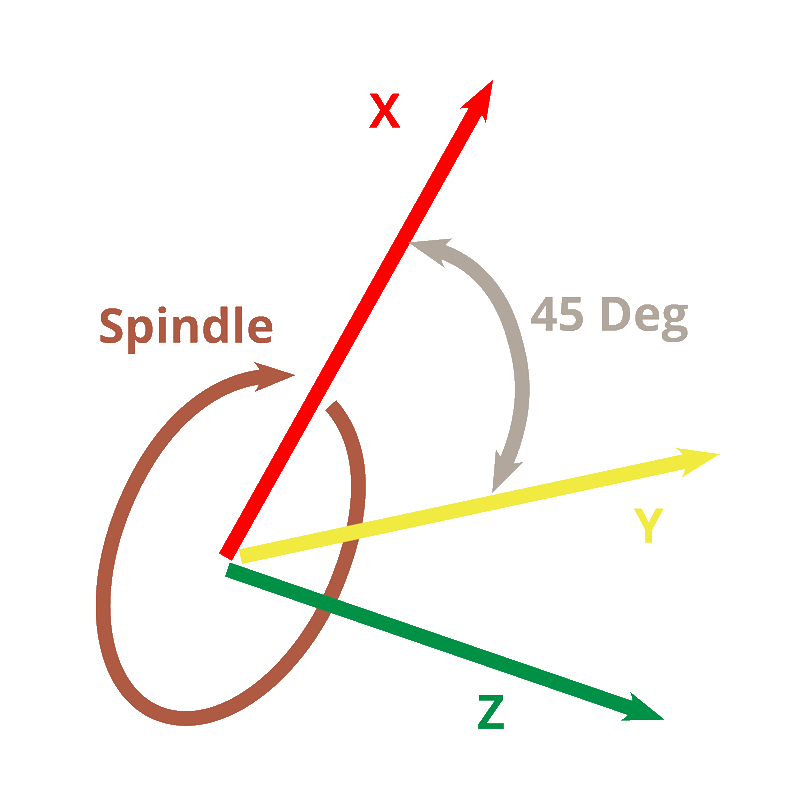
The machine images shown are for illustration purpose only. Actual machine and specifications may vary due to product enhancement and continuous improvement
Gang tooling is ideal for smaller diameter, short parts that don’t require a tailstock. It is particularly efficient for straightforward tasks and is easy to implement for applications where space and tool changes are minimal. In contrast, turret tooling excels in versatility and is essential when a tailstock is needed or when handling more complex, multi-tool operations.
In gang tooling setups, tools are arranged in a fixed sequence on the lathe’s cross-slide. To use a specific tool, the lathe moves away from the workpiece along the spindle axis, ensuring the tools do not interfere with the part. The X-axis then positions the appropriate tool, and the Z-axis is adjusted to start the cutting operation.
Larger CNC lathes and multi-purpose machines typically feature turret tooling. Turrets are beneficial for larger operations, particularly when working with large-diameter parts, as they allow greater clearance and enable the turret to approach the part from behind. While turret systems are more complex and require additional effort for tool changes, they offer the ability to hold multiple tools and rotate to the appropriate one for the job. This increased flexibility makes turrets a must-have for more intricate or diverse machining tasks.
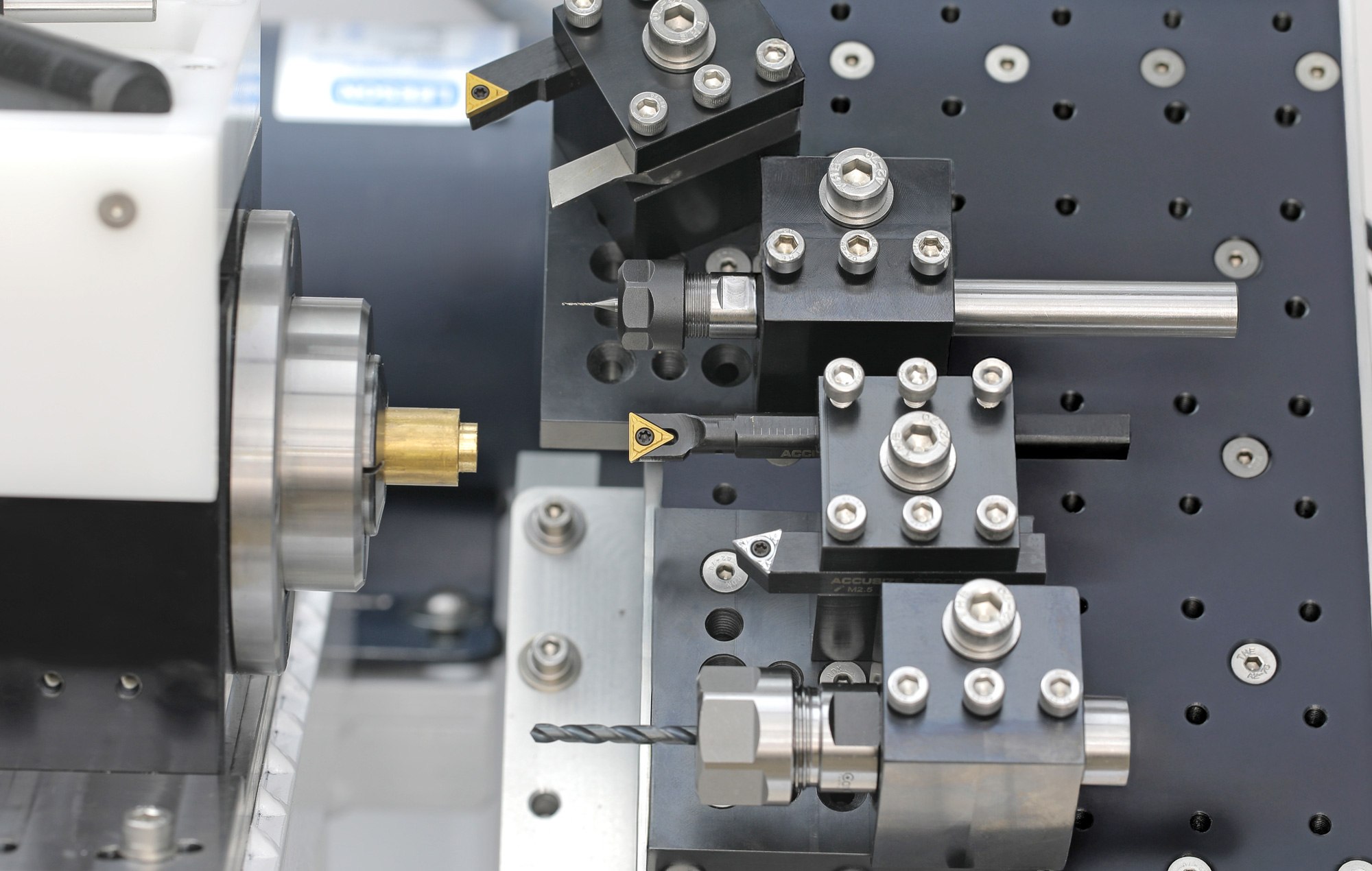
The machine features a versatile tool-holding system, utilizing individual posts with slots or holes to securely fix each tool in place. These posts can be adjusted to different angles relative to the coordinate axes to accommodate various machining needs.
The posts are mounted onto bases, which are securely fastened to the X carriage table. This design allows for flexible positioning, enabling the tools to be arranged in any configuration that best suits the operator’s requirements.
In addition to the standard post configurations, the company is also able to manufacture custom posts tailored to specific dimensions or designs, based on customer specifications, to support specialized tooling needs.
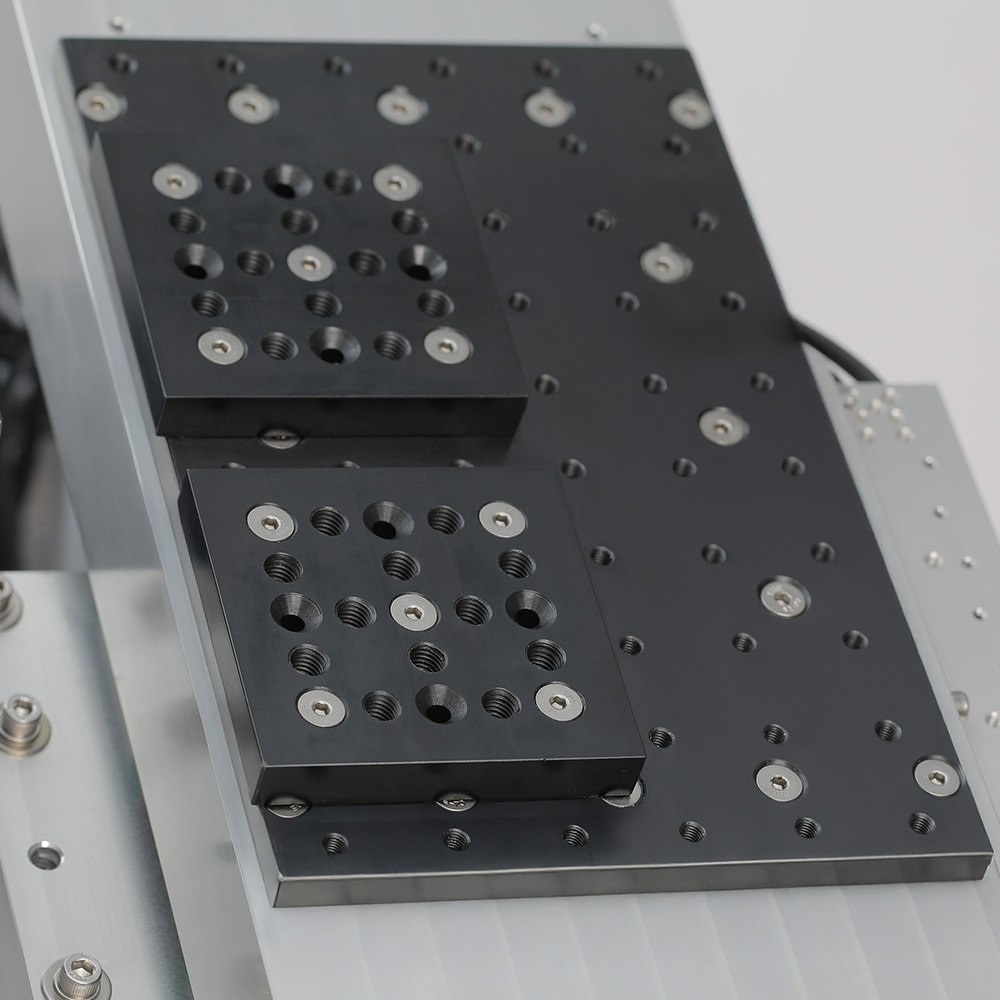
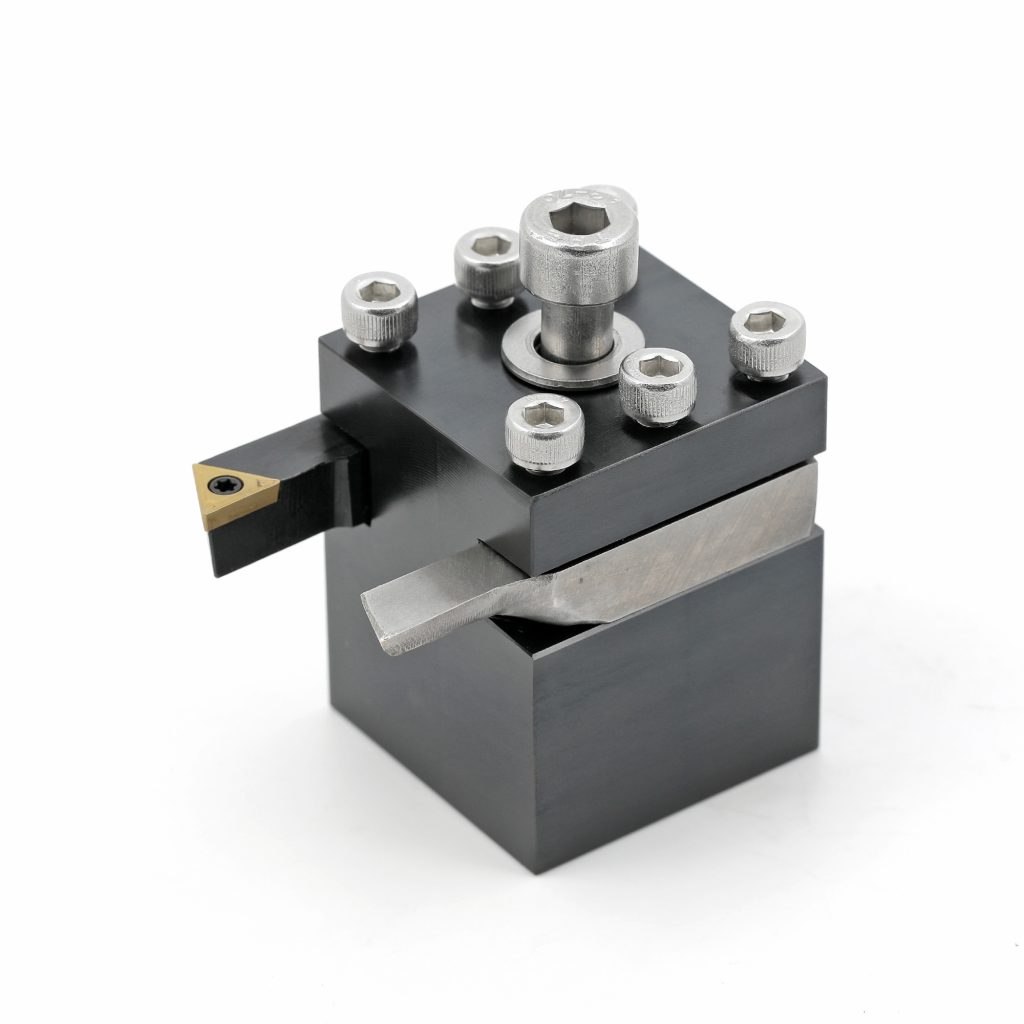
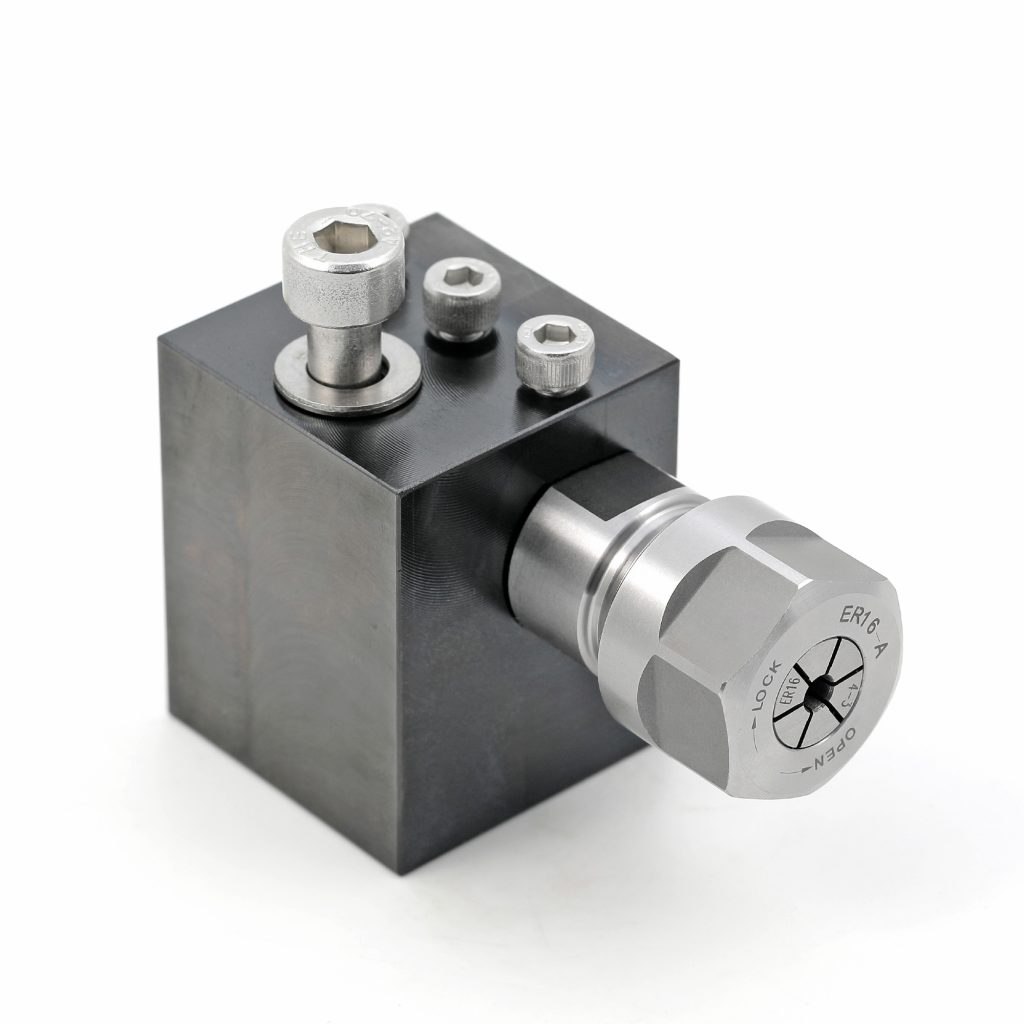
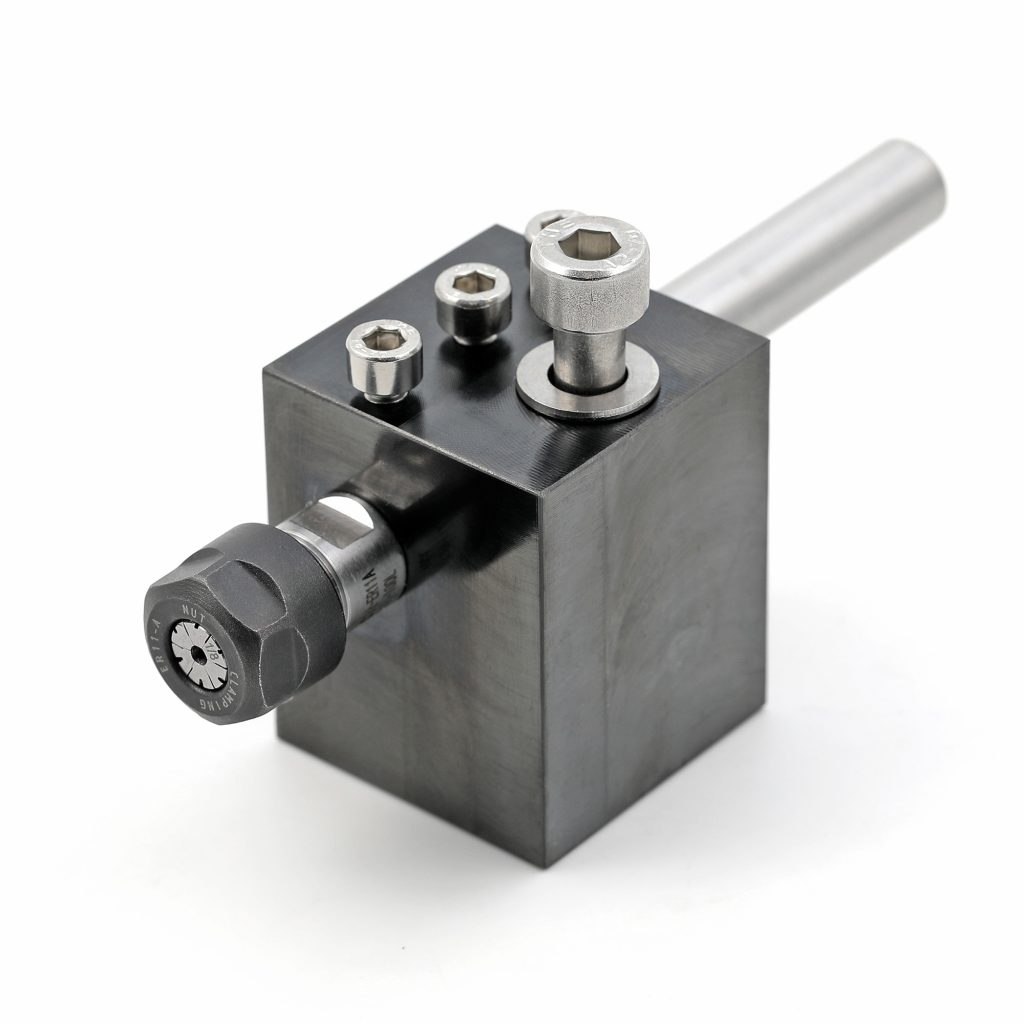
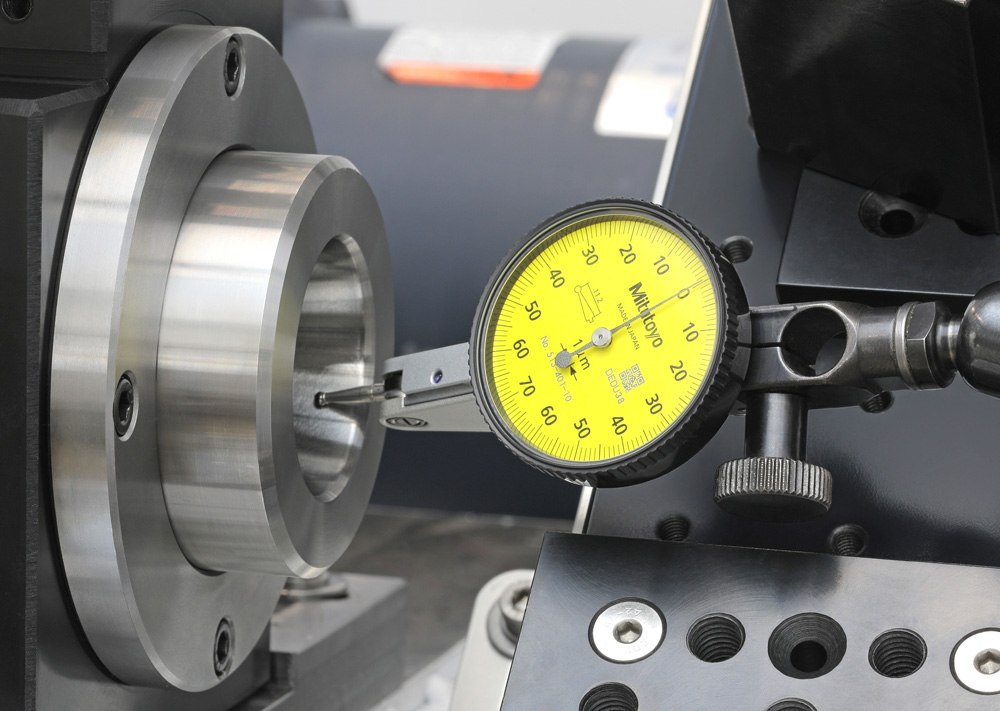
The 5C collet installed in the Headstock of the lathe is the most popular and oldest, which appeared with the first lathe at the end of the 19th century. Brothers Franklin and Henry Hardinge, founders of the Hardinge Brothers Inc., created the first watchmaker lathe, the Hardinge Cataract Lathe, which used #5 Back-Gear Head with collet.
Since then, the name 5C (#5 Cataract) has appeared. The “Cataract” name came from the river cataracts outside the original Hardinge factory in Chicago. The collet design turned out to be very successful and has not changed for the second century. Along with size #5, other sizes of the C series appeared.
The 5C collet became an industry standard for lathe. 5C collets range from 0.5 mm (that’s 0.0196″ ) capacity to 1-1/16″ round; 5C collets hold up to 3/4″ square and and 29/32″ hex.
Generally, the 5C collet is the subtype of chuck that can quickly form the collar around the object to occur. Then it will apply a strong clamping force on the object after tightening. It can be helped by tapering the outer collar. Finally, lathe collets are useful for holding the tool or workpiece.
The picture on the right shows collets of different sizes. The picture below shows a collet with a bar that is used to clamp it at the back.
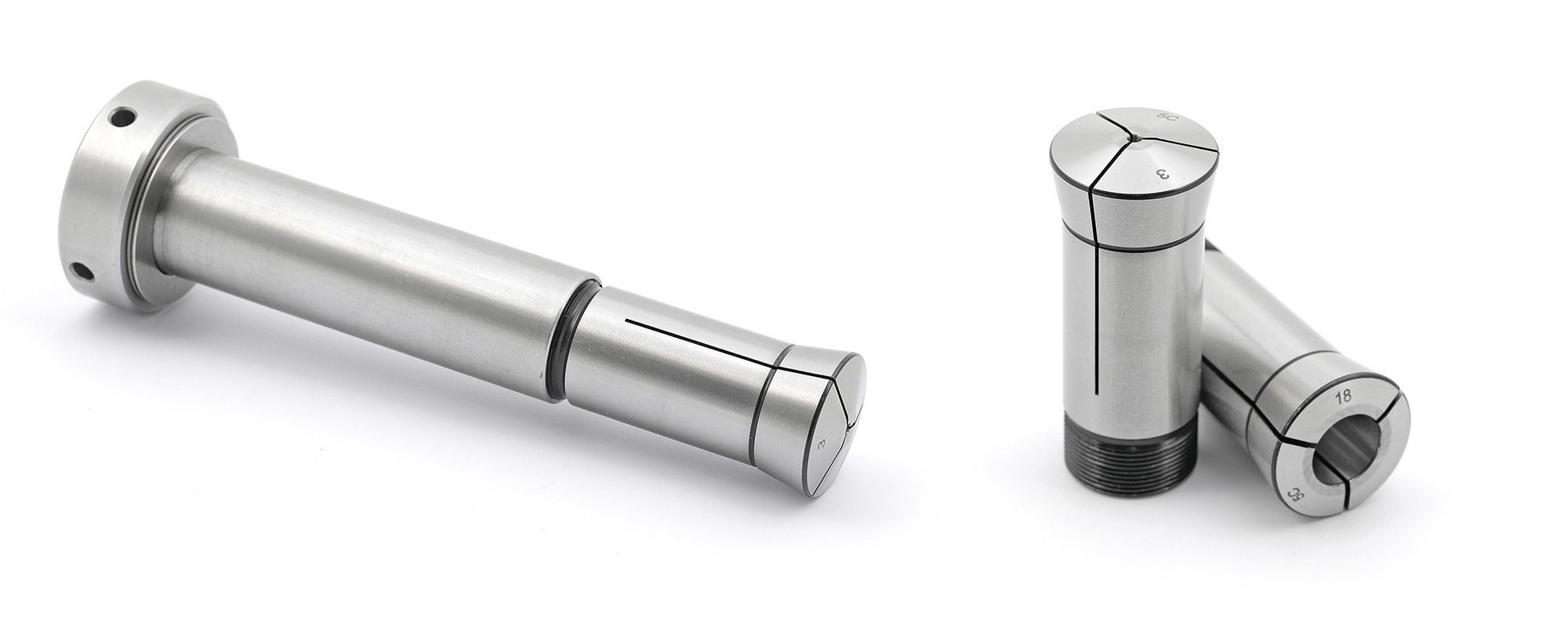
The 5C collets are useful and highly accessible in metric and inch dimensions. You can use the wide range of collets with standard 5C collet equipment, rods, and other producers’ 5C equipment.
For example, a 3-jaw clamp (Picture on the right) or an adapter for collets of another very popular type of ER Collet (Picture on the left)
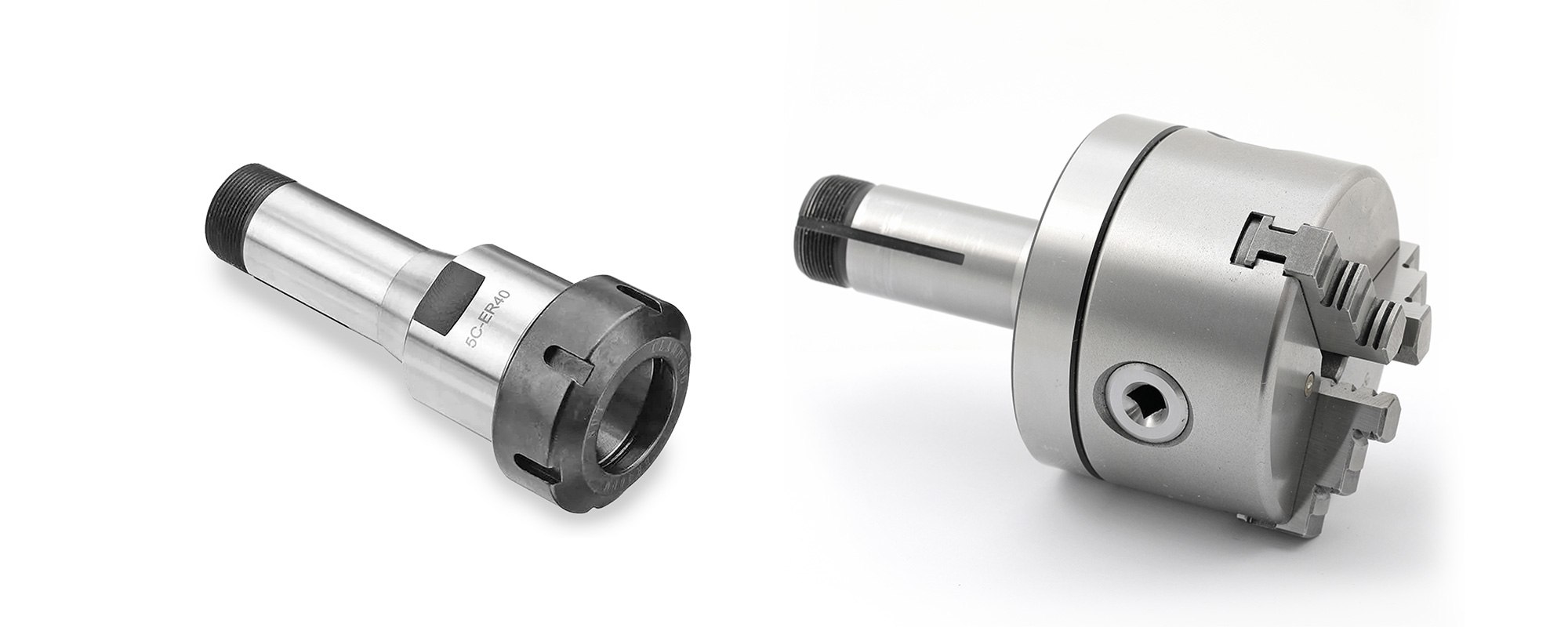
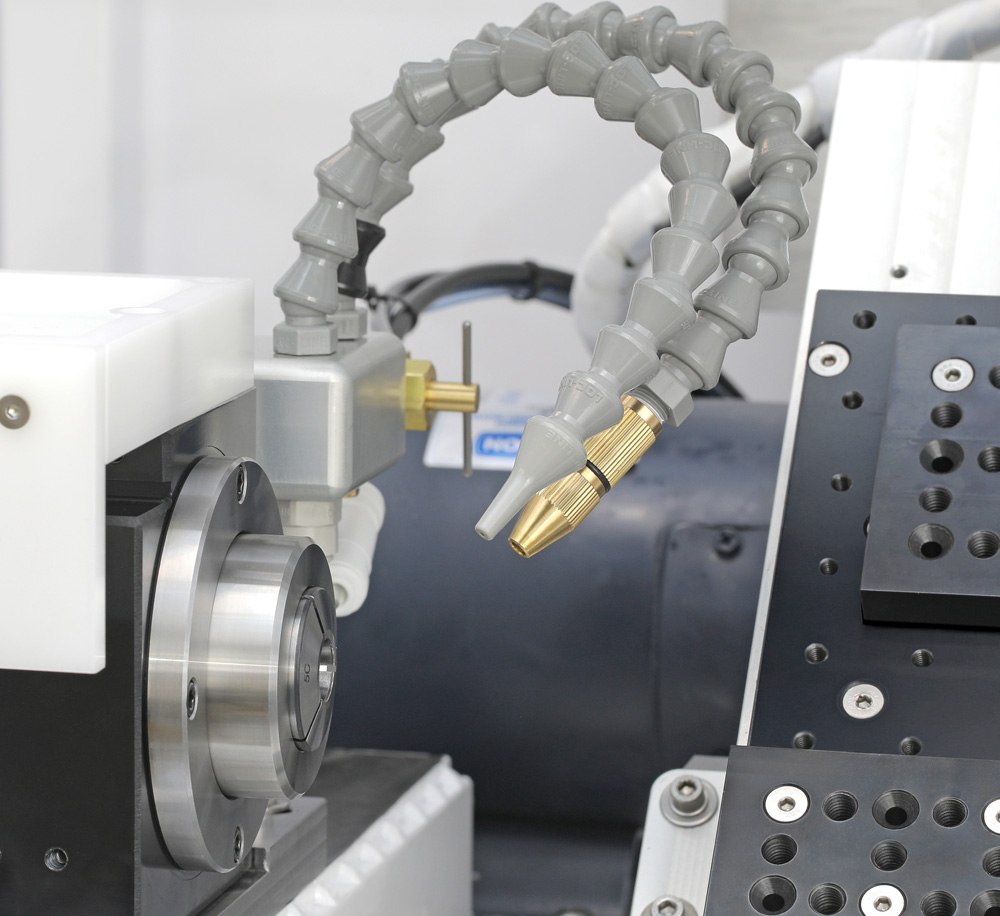
The Lathe is equipped with a dual cooling system. You can feed a regular coolant into the working area through a regular plastic nozzle. This is a water-soluble oil that wets the workpiece, cools the tool and prevents dust from spreading. The coolant can be supplied either continuously or in a pulsating mode. This can be adjusted in the control program. The pulsation can be with intervals from 0.1 to 5.0 seconds.
Through a nozzle with a brass tip you can supply a mist of air mixed with coolant. This allows you to blow away chips along with moistening the working area. The mist supply is regulated by a manual valve. The nozzles can be installed in two positions. Stationary, next to the spindle (Picture on the left). Movable, on the X carriage (Picture below).
Which nozzle position, mist or coolant, which type of coolant depends on the material being processed, cutters, turning strategies and many other parameters. Under certain conditions, you may not need a coolant at all. These and many other questions can be answered by our specialists.
